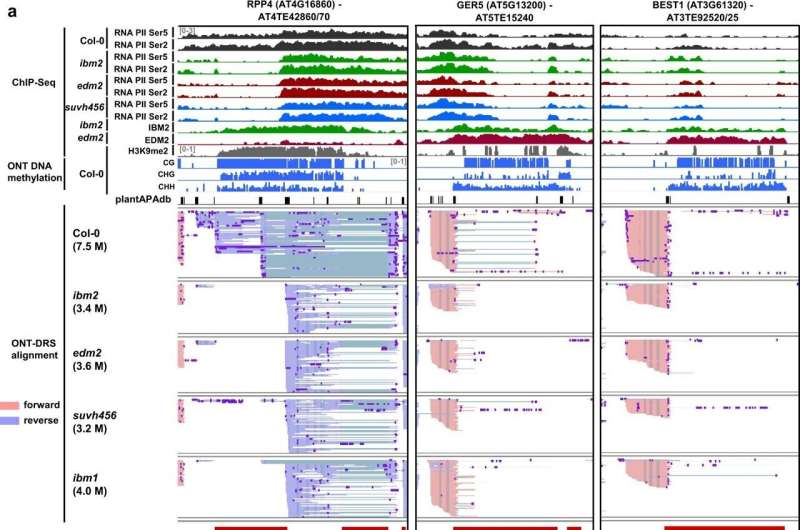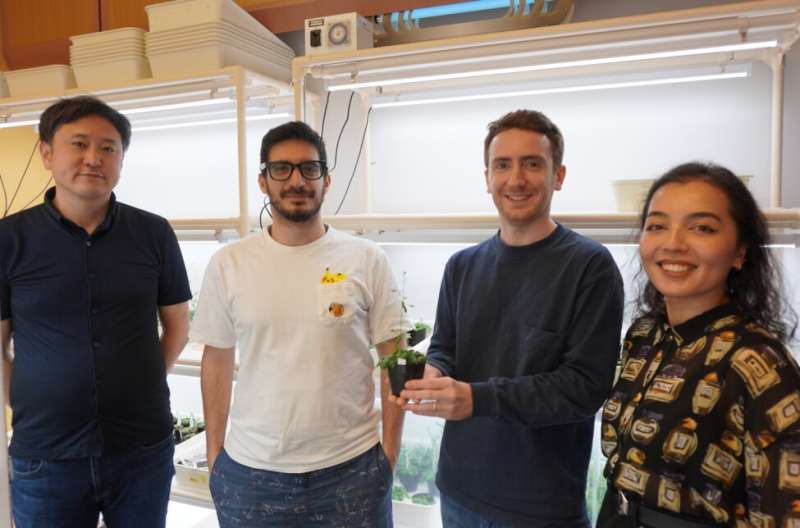This article has been reviewed according to Science X's editorial process and policies. Editors have highlighted the following attributes while ensuring the content's credibility:
fact-checked
peer-reviewed publication
trusted source
proofread
'Jumping genes' help plants adapt to extreme temperature and pathogens

Jumping genes, or transposons, are sections of DNA that can copy themselves and jump between different parts of the genome, and might help plants adapt to stressful, changing conditions, according to a study published in Nature Communications on June 5, 2023.
Using a cutting-edge sequencing technique, researchers from the Okinawa Institute of Science and Technology (OIST) and the Center for Sustainable Resource Science, RIKEN found that Arabidopsis thaliana, a plant used as a model for scientific research, expresses thousands of hybrids between regular genes and jumping genes. The plant alters the expression of these hybrid genes in response to environmental stresses such as excessive heat, or pathogens. These findings could contribute to the development of new crops that can better cope with stressful environments.
Regulation of gene expression (in other words, how a cell controls which genes are active) is vital for the correct functioning of all living things. When genes are expressed, genetic instructions are converted from DNA into RNA transcripts, ensuring useful products like proteins are made at the right time and in the right place.
Typically, plants and animals also use gene regulation to suppress the activity of transposons, says Dr. Jeremy Berthelier, lead author of the study and post-doctoral researcher in the Plant Epigenetics Unit. "Transposons can be damaging, as these sections of DNA can insert themselves into genes and cause harmful mutations."
However, in this new study, the scientists found that Arabidopsis thaliana expresses thousands of RNA transcripts that are hybrids of regular genes and transposons. These hybrid RNA molecules, called gene-transposon transcripts, occur when transposons jump near or within a gene, and are then expressed together.

The researchers identified these transcripts using a cutting-edge method called Direct RNA Sequencing that can read long RNA sequences. They then used a computational tool they developed, called ParasiTE, to classify the gene-transposon transcripts, based on the effect that the transposon had on the gene.
The researchers then conducted a systematic study of how environmental stresses affect gene-transposon transcripts. They found that a transposon called ONSEN, caused a change in expression of its associated gene, GER5, in response to excessive heat.
Another finding relates to a gene called RPP4, which produces a protein that helps A. thaliana fight against pathogen infections. The researchers found that suppressing expression of the gene-transposon transcripts of the RPP4 gene affects the plant's resistance to pathogens.
Gene-transposon transcripts can therefore help plant adapt to environmental stresses and changing environmental conditions.
"The broader implications of the study are that transposons can regulate their associated genes in a sophisticated way, by changing their DNA sequence and modulating their expression and stability. This may be very important for plant life, and their response to changing environmental conditions, such as extreme temperatures or to pathogens," says Dr. Berthelier.
The study could also prove to be useful for developing resilient crops. Professor Hidetoshi Saze, senior author of the study and head of the Plant Epigenetic Unit at OIST, says, "We can now study other plants that are important crop species. We could find even more genes which have transposon-dependent regulation and target these genes for editing, to make more productive crops for cultivation."
More information: Jérémy Berthelier et al, Long-read direct RNA sequencing reveals epigenetic regulation of chimeric gene-transposon transcripts in Arabidopsis thaliana, Nature Communications (2023). DOI: 10.1038/s41467-023-38954-z
Journal information: Nature Communications
Provided by Okinawa Institute of Science and Technology



















